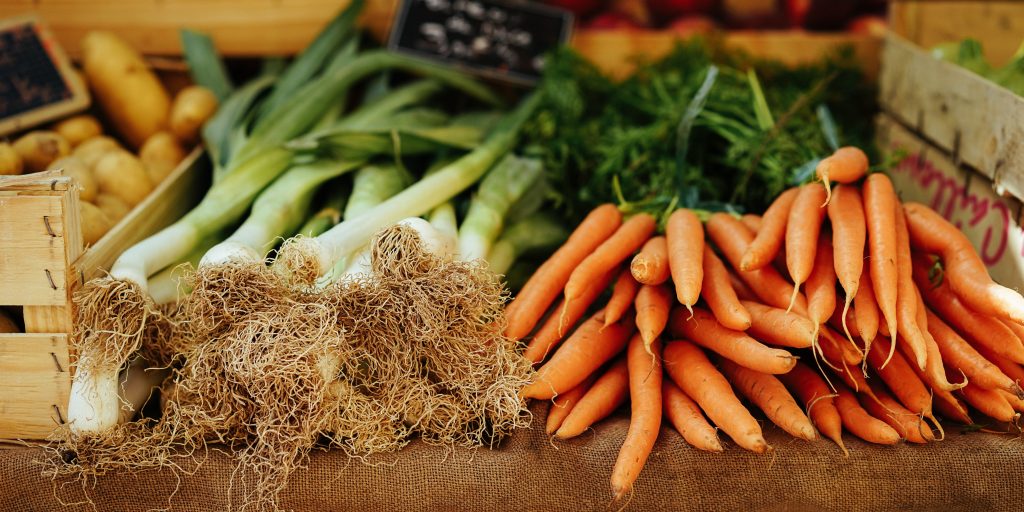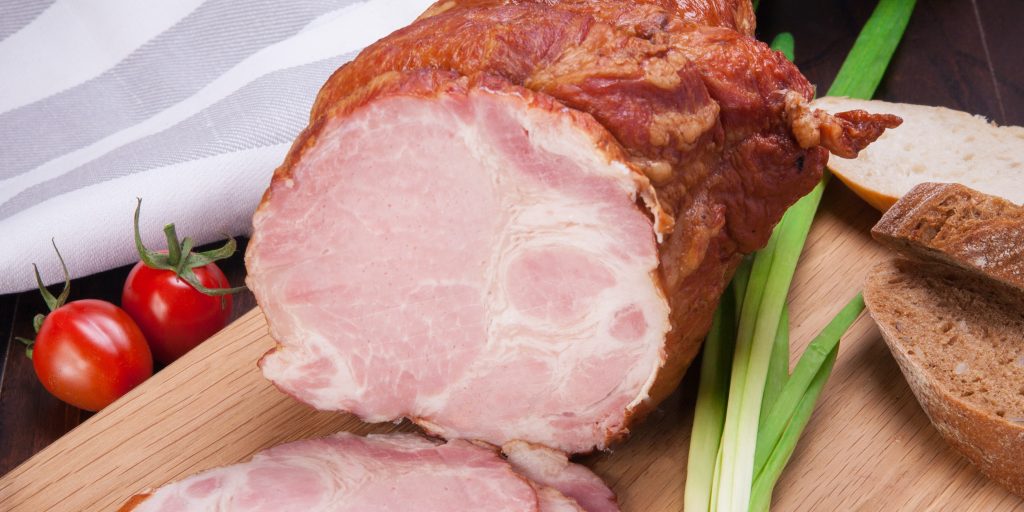
How does Freezing Food Save Time and Money?
Your freezer can save you both time and money. Freezing food is the fastest and most versatile option you have to preserve foods for later. Almost any food can be frozen.
Most foods, whether prepared foods or individual ingredients, can be frozen without worrying about spoilage or bacteria. Freezing food like meals and snacks is easy, so you can eat better and save money at the grocery. Freezing ingredients can allow you to enjoy summer harvests all year.
You can save money when you eat prepared foods rather than ordering them. You can also take advantage of sales and gluts of produce by freezing foods for later.
Even if your goal is to can, ferment, or dehydrate your foods, you can freeze them until you have time to preserve them later. Foods maintain their nutrients in the freezer.
Baked goods freeze well, too. Save time by making extra of a favorite treat and then freezing for later! Try prepping a bunch of meals, so you can easily get dinner on the table without much thought or time.
Of course, freezing food comes with some costs. An extra freezer needs electricity and space. There is also the risk of losing your frozen food during a power outage.
Yet the benefits of freezing food easily outweigh the disadvantages. Electrical costs are easily offset by the savings you can get from buying in bulk, taking advantage of sales, and saving on restaurant expenses.
What Kind of Freezer Should You Get?
Everyone who has space and wants to save money and time should have a second freezer. Even if you don’t cook, you can use your freezer to save bulk meals that keep you from ordering food.
When you are serious about cooking and enjoying local foods, you’ll definitely want a freezer. That way you can store up your in season produce, and purchase larger amounts of sustainable meats and dairy. If you bake, you can store freshly ground flours and baked goods.
Choosing a freezer depends on your budget, your space, and your lifestyle. There are two options out there, chest freezers and upright freezers.
Chest freezers stay colder, are more efficient, and are better during a power outage because food stays colder longer. They have more usable space than an upright freezer. Since temperatures are more consistent, there is less freezer burn. They are also cheaper than uprights.
However, it’s harder to keep a chest freezer organized. It takes up a larger footprint. And you may have to defrost it.
Upright freezers are much more organized and it is easier to find food in them. They have a smaller footprint and fit in smaller places. They may come with a self defrost option, though that can compromise your foods. They also come in other finishes to look nicer in your kitchen.
Yet uprights also cost more to operate, can be noisier, and their temperatures aren’t as consistent. They also cost more to purchase.
So what is more important to you? Do you lack space? Do you like being able to see everything easily? Or are you worried about power outages, have a large space, and want to cut electricity costs?
How big of a freezer do you need? A cubic food of freezer space can hold about 35 pounds of food. Some manufacturers say you should have at least 1.5 cubic feet of space per person eating at home.
Do you plan to use your freezer to buy meat in bulk? Do you like to bake and store flour? How committed to eating local during the winter are you? That 1.5 cubic feet per person might not be enough for your family.
What Should You Put in Your Freezer?
Most things can be frozen! Fruits and vegetables, meats, most dairy, grains, prepared meals. Produce won’t be the same after freezing, and is better in smoothies or cooked meals.
Don’t freeze vegetables with high water content (cucumbers and lettuce, for example), creamy foods, soft cheeses, mayonnaise, and fried foods (they will get soggy). Find guidance on what not to freeze at the National Center for Home Food Preservation.
Generally, you want to blanch vegetables before freezing. Fruits and vegetables can be frozen on sheet pans until solid, then transferred to a container. This way you can grab smaller portions as needed rather than having to defrost the whole container.
A large freezer allows you to buy meat in bulk. You can order half a pig, or a quarter beef. Prices for sustainable animal products in bulk will be more affordable.
A whole pig requires about 8 cubic feet of space, while a quarter pig needs only 2. A half beef needs 8 cubic feet. Assume each cubic foot will hold about 15-20 pounds of meat. Use that to estimate how much meat you need and how big of a freezer you need for bulk meat.
Even if local meat is outside your budget, you can also take advantage of meat sales at the supermarket. Buying almost expired meat and freezing it will stretch your budget!
Milk can be frozen but will separate once thawed. Yogurt does the same. Plan to use these products in smoothies or cooked dishes rather than fresh.
Some cheeses can be frozen. I like to keep shredded cheddar and mozzarella in my freezer so I can use what I need without worrying about mold.
Herbs freeze well, whether on a sheet pan and then into a bag, or mixed with oil and frozen in ice cube trays.
You should always freeze your grains when they come home for a few days to kill any insects. I’ve had pantry moths and you do not want them!
Whole grains don’t have to be frozen but once opened you may want to keep them in the freezer. Any whole grain flour should be frozen because they lose nutrients and go rancid quickly.
Baked goods like pancakes, muffins, breads, and waffles, can be frozen to be enjoyed later. Most sites say to wrap breads in plastic, but it’s easy to find plastic free options out there.
Unbaked goods freeze well too! Try freezing balls of cookie dough for later, or shaped raw biscuits and scones. Pie crusts, bread dough, and pizza dough also freeze well.
Shelled nuts go bad in a few months. If you buy nuts, keep them in the freezer.
There are tons of examples of meal prepping out there. You can freeze ingredients for crockpot meals, you can freeze casseroles, you can freeze topped pizzas. Or you can make burritos or other portioned cooked items so you have quick meals to heat up when you are hungry.
Cook dry beans and portion them out for later, rather than buying cans. Cook rice or other grains so you save time when you need them.
Save scraps from meat, vegetables, fruit. When you have enough you can make delicious meat or vegetable broths. Use the fruit scraps to make vinegar.
Depending on how you store your foods, they can last up to a year in the freezer. Fruit and veggies will last a year. Butter, wrapped well, also a year. Milk only three months. Meat and fish depend on how they are packaged. Buying bulk meat should last 6 months to a year.
Freezing foods seasonally means that in spring you will want to clean it out. Assess what got eaten and what got lost or forgotten. Get the freezer ready for the farmers markets and figure out how much meat you want and when you want it.
Maintaining Your Freezer
You want your freezer to stay at 0 degrees Fahrenheit. At higher temperatures you risk freezer burn. In an upright freezer, the door has the most temperature swings, so don’t store your meats there.
Keep your freezer full. At least 2/3 full is most efficient. As you eat through your food, put jugs of water in. This will keep the freezer colder in a power outage too.
The Simple Dollar claims that a 21 cubic foot freezer will cost them $11 a month to buy and operate. Can you save that much with a freezer each month? A smaller freezer will cost less to buy and operate.
If needed, defrost your freezer when it has too much ice. Wipe the rubber seal to keep it operating properly. Keep meat at the bottom or away from the door to avoid freezer burn. Keep the coils clean.
Don’t put hot food into your freezer, that will waste electricity and potentially thaw the foods next to them. Thaw your frozen food in the fridge, keeping the cold air in the fridge.
Allow your freezer some space for air to circulate around it, and keep it out of direct sun. Keeping it in a cooler spot like a basement will mean less electricity costs.
Organizing your Freezer
Keeping your freezer organized means you will eat your food before it gets too old, and keeps you from having to open the freezer too often. It’s easy to lose food in an unorganized freezer!
Start organizing by figuring out how you plan to use the freezer. Set up zones for where to store meat, vegetables, meals. Freezing foods means labeling everything!
Labels should include a date and what is in the package. You may want to add notes about how to use the item or how to reheat it.
Having an inventory of your freezer is the best way to make sure you know what is in there without having to dig. You can have a whiteboard on the outside, a pen and paper, or keep track on your phone.
Use your inventory to help you meal plan. Make sure you eat the food you froze!
Especially in a chest freezer, you want to use baskets or bins. Keep small items and oddly shaped ones in them. Set up zones with them. That way you can pull out a basket to easily reach the bottom of a chest freezer.
Freeze sauces and other liquids flat in bags, then stack in magazine holders. Don’t freeze clumps of things, freeze on sheet pans and then put into containers. Portion out meat, breaking down larger pieces like whole chickens or packages of ground beef.
Take store bought foods out of boxes so they take up less space. Label them so you don’t forget what you have.
When freezing food in glass jars, makes sure to leave headspace for expansion of the frozen food.
Freezing Food Sustainably
You can lower electrical costs by keeping your freezer in a cooler spot and or covered to insulate it further. You might want to empty it in early spring and leave it unplugged until you need it again.
So many suggestions about freezing food online use plastic wrap or plastic bags. There are so many other choices out there! With a little thought, you can avoid using single use plastic when freezing food.
Freeze sauces and portioned out fruits and vegetables in glass jars with headspace. You can also buy larger glass containers for baking or to store larger amounts.
You can buy reusable silicon bags. Or simple reuse freezer bags. If you keep the bag in the freezer after you remove the food, it won’t grow bacteria on it. Try reusing cereal bags for meats, so you can throw away the bag after you use it.
Butcher paper can be an option, though meat won’t last as long as it will in plastic. Modern butcher paper may be coated with plastic, so don’t be fooled.
You can wrap things in wax paper and then aluminum foil, and reuse the foil afterwards.
Beeswax wraps can also be used over and over again and make a good substitute for wax paper or plastic.
Tomatoes, peaches, and bananas can be frozen as they are. As a bonus, skins slip right off when thawed!
Freezing Food is Easy
A freezer can be a great addition to your home. With a freezer, you can save money and time. Buying in larger quantities can be a great money saver.
Having a fully stocked freezer means you can choose healthier snack and meal options because you have them ready made. Money is saved because you won’t have to go out. You can enjoy food with less packaging.
Buying in bulk is possible with a freezer because you have the space to store meats, grains, produce. Prices will be lower if you buy larger amounts.
Freezing food is so easy to do, and can save so much money! Enjoy your freezer!





